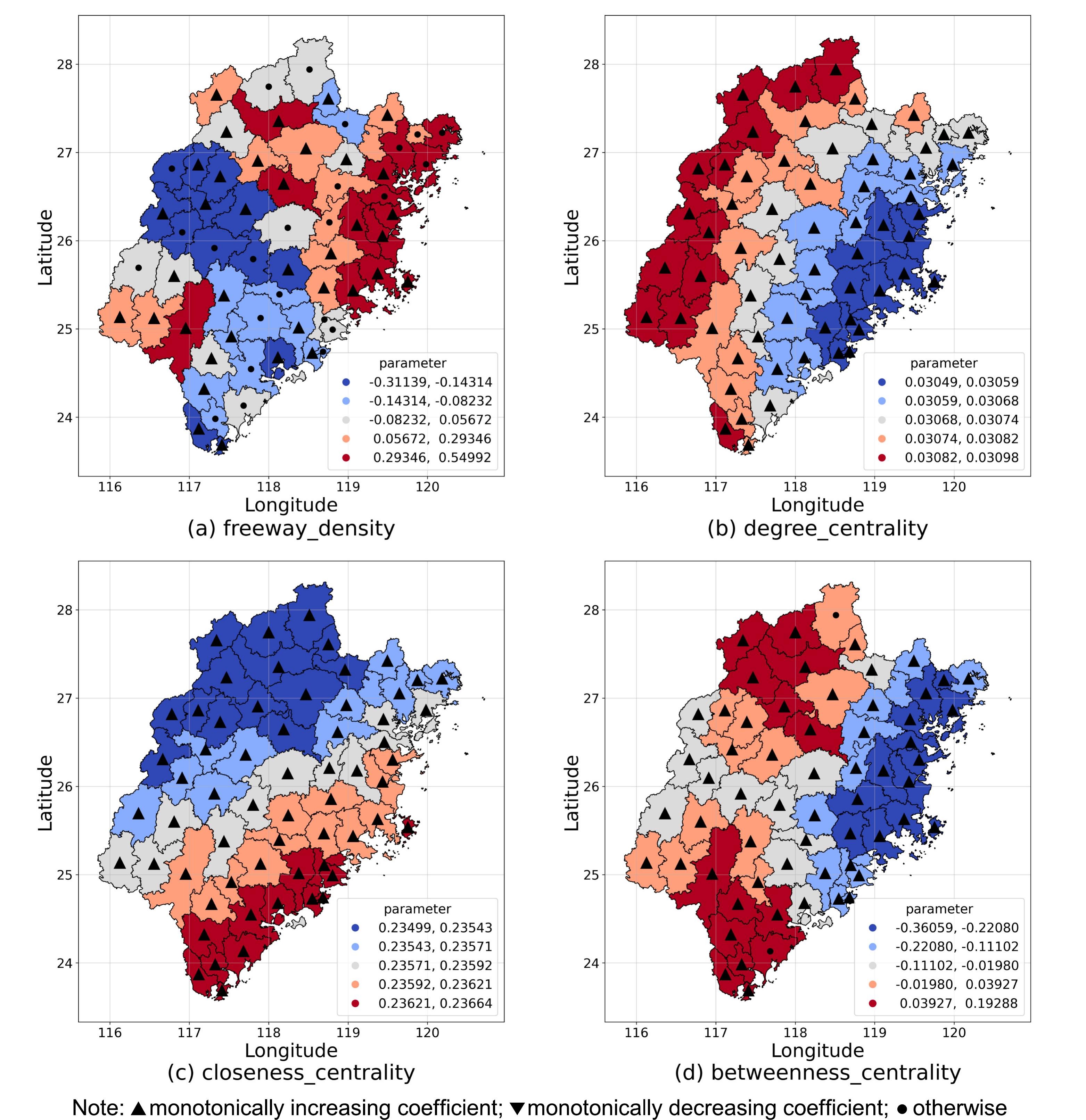Spatio-Temporal Analysis
Impact of Spatio-Temporal evolution of freeway networks on Socio-Economic Dynamics: A case study from Fujian, China
0. Research Objective
To explore the impact of freeway evolution on socioeconomic attributes. Specifically, it jointly consider free density and freeway nertwork topology to study their impact on: a.socio-economic indicators b. county-level POI dentsities c. POI dentieis along the freeway
1. Data and variables
1.1 Research Area and data
The reseach Area is the Fujian Province, the granularity of the analysis unit is county-level, there are 61 analysis unit in total.
The data includes:
- Freeway netowrk data, obtained from OpenstreetMap
- POI data, obtained from Amap API.
- Social-economic data, obtained from China Statistical Yearbook(county-level)
1.2 Variables
- Independent variables: Freeway density, freeway network topology attributes, including degree centrality, closeness centrality, betweeness centrality.
- Dependent variables: Three categories, including Socio-economic attributes, county-level POI densities, POI densities along the freeway.
2. Methodology
Multiscale geographically and temporally weighted regression (MGTWR) is employed:
\[Y(i) = \beta_{bw\, s_{0},\, bw\, t_{0}}(i) + \sum_{m=1}^{n} \beta_{bw\, s_{m},\, bw\, t_{m}}(i)\, X_{m}(i) + \varepsilon(i)\]where $i$ represents the $i$th sample characterized by specific spatiotemporal coordinates ( $u_i$,$v_i$,$t_i$ ), $Y(i)$ signifies the dependent variable of interest, $X_m(i)$ denotes the th independent variable.
3. Results
This below figure illustrates the estimated coefficients associated with the four independent variables concerning the primary industry output. Each coefficient depicted in the figure signifies the mean value across a span of four years (i.e., 2018–2021) within a distinct fundamental analysis unit.
The color indicates the relative magnitude of the coefficient, ranging from red (high positive values) to blue (high negative values). The upward triangle symbol implies that the estimated coefficient for a given unit exhibits a consistent and monotonic increase over the four-year period. Conversely, the downward triangle symbol is employed to denote estimated coefficients that exhibit a steady decrease across the same temporal span. Meanwhile, the dot symbol is utilized to represent cases where the estimated coefficient does not exhibit a discernible monotonic trend.
